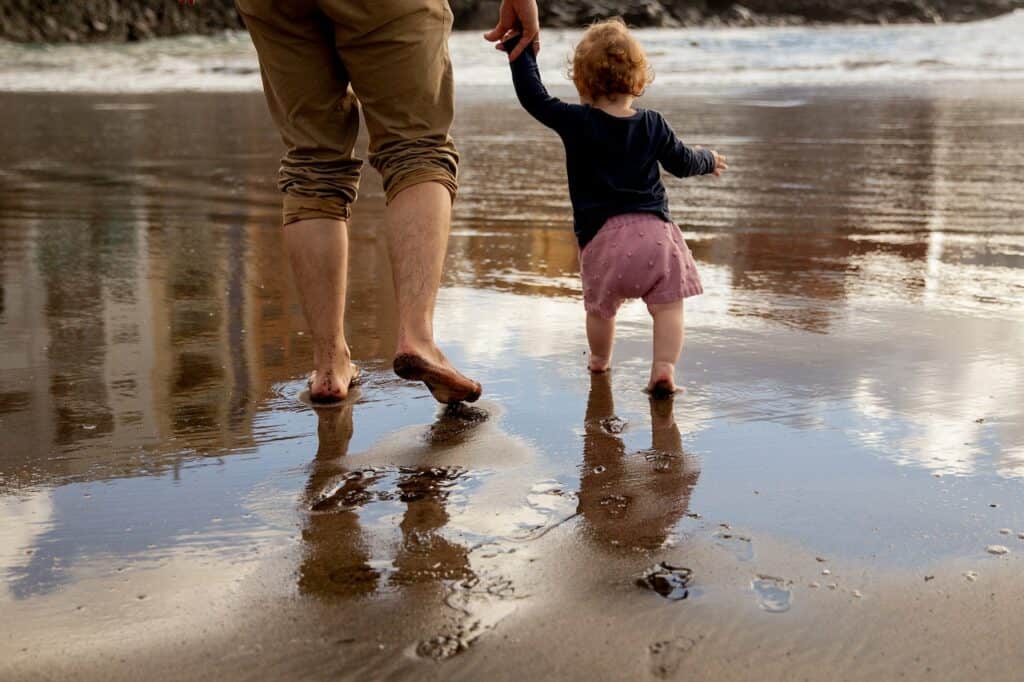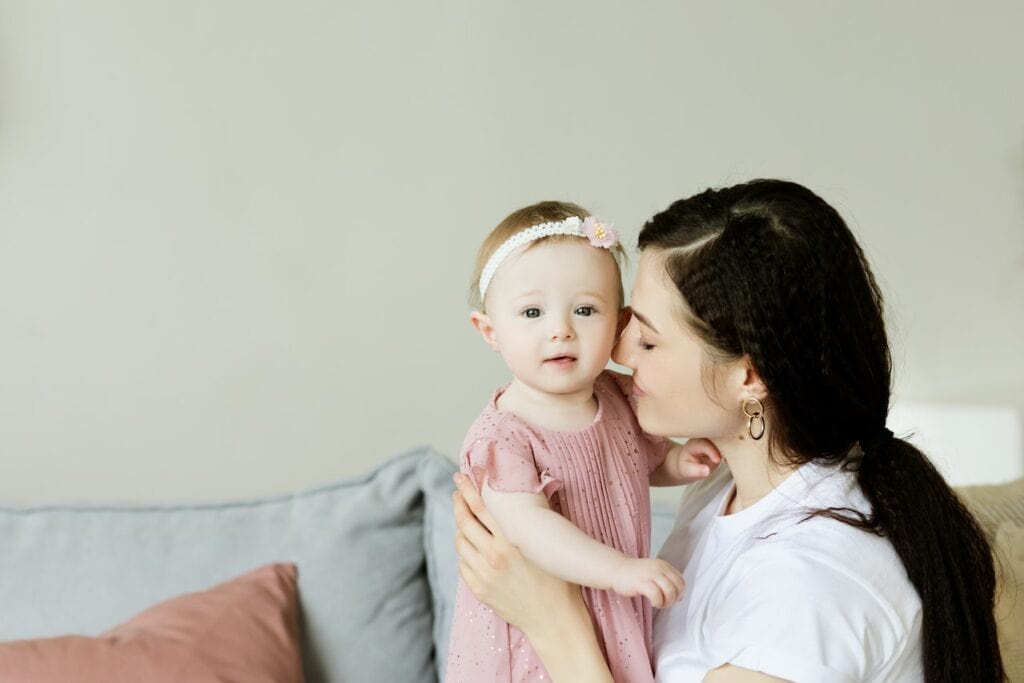Disciplining a 2-year-old can be a challenging task for many parents. Toddlers are known for their tantrums and unpredictable behavior, which can often lead parents to lose their cool and resort to yelling. However, yelling is not an effective way to discipline a child and can actually have negative consequences on their development. In this article, we will explore some effective strategies for disciplining a 2-year-old without resorting to yelling.
Understanding the Mind of a 2-Year-Old is the first step towards effective discipline. At this age, children are still developing their communication skills and have a limited attention span. They are also exploring their environment and testing boundaries, which can often lead to misbehavior. By understanding their needs and limitations, parents can tailor their discipline strategies to meet their child’s unique needs. This article will provide some insights into the mind of a 2-year-old and how parents can use this knowledge to discipline them effectively.
Key Takeaways
- Effective discipline strategies for 2-year-olds do not involve yelling.
- Understanding the mind of a 2-year-old is crucial for effective discipline.
- Communication, respect, and consistency are key components of effective discipline.
Understanding the Mind of a 2 Year Old
Disciplining a 2-year-old can be challenging, but it’s important to understand their mindset to effectively address their behavior. Toddlers are still developing their emotional and cognitive abilities, which can lead to frustration and misbehavior.

At this age, toddlers are learning to assert their independence and test boundaries, leading to power struggles with parents or caregivers. They may also have difficulty communicating their needs and emotions, resulting in meltdowns.
It’s important to approach discipline with a neutral tone and avoid yelling or harsh punishments, as this can escalate the situation and damage the parent-child relationship. Instead, parents can use positive reinforcement, redirecting, and consistent consequences to teach appropriate behavior.
By understanding the emotions and behaviors of a 2-year-old, parents can approach discipline with confidence and knowledge, creating a positive and nurturing environment for their child’s development.
Why Yelling is Counterproductive
Yelling at a 2-year-old child is not only unproductive but also counterproductive. It does not help the child to understand what they did wrong, and it can actually make the situation worse. Here are a few reasons why yelling is counterproductive:
- Yelling creates fear and anxiety: When a child is yelled at, they may become afraid and anxious, which can lead to a lack of trust and a breakdown in the parent-child relationship. This can also lead to a child becoming more defiant and resistant to discipline.
- Yelling can lead to aggression: When a parent yells at a child, it can escalate into a rage, which can lead to physical aggression. This can be harmful to the child and can lead to serious consequences.
- Yelling can shame the child: When a parent yells at a child, it can make them feel ashamed and embarrassed. This can lead to a child feeling like they are not good enough or that they are a bad person. This can be damaging to a child’s self-esteem and can have long-lasting effects.
Instead of yelling, parents should use positive discipline techniques such as redirection, positive reinforcement, and setting clear boundaries. These techniques can help a child to understand what they did wrong and how to correct their behavior in a positive way.
Effective Discipline Strategies
Disciplining a 2-year-old can be a challenging task, especially without resorting to yelling. However, there are several effective discipline strategies that parents can use to promote positive behavior in their young children.

1. Set Clear Boundaries
Setting clear boundaries is an essential aspect of effective discipline. Parents should communicate their expectations to their children and establish clear rules and limits for their behavior. This can help children understand what is expected of them and reduce the likelihood of misbehavior.
2. Use Natural Consequences
Natural consequences can be an effective way to discipline a 2-year-old without yelling. For example, if a child refuses to eat their dinner, they may feel hungry later in the evening. This natural consequence can help the child understand the importance of eating their meal and encourage them to behave appropriately in the future.
3. Implement Time-Outs
Time-outs can be an effective discipline tool for young children. When a child misbehaves, parents can place them in a designated time-out spot for a brief period. This can help the child calm down and reflect on their behavior. It is essential to follow through with the time-out and ensure that the child understands why they were placed there.
4. Use Positive Reinforcement
Positive reinforcement can be a powerful tool for promoting positive behavior in young children. Parents can use praise and rewards to encourage their child’s good behavior. For example, if a child shares their toys with a friend, parents can praise them for their kind behavior and offer a small reward, such as a sticker or a piece of candy.
5. Practice Consistency
Consistency is key when it comes to effective discipline. Parents should be consistent in their expectations and consequences for misbehavior. This can help children understand what is expected of them and promote positive behavior in the long run.
6. Redirecting Behavior
Redirecting a child’s behavior can be an effective way to discipline without yelling. If a child is misbehaving, parents can redirect their attention to a more appropriate activity or behavior. For example, if a child is throwing toys, parents can redirect their attention to a puzzle or a coloring book.
Overall, effective discipline strategies involve setting clear boundaries, using natural consequences, implementing time-outs, using positive reinforcement, practicing consistency, and redirecting behavior. These strategies can help parents promote positive behavior in their young children without resorting to yelling or spanking.
Communication and Respect
Effective communication and respect are essential when disciplining a 2-year-old without yelling. Parents can establish a positive relationship with their child by communicating with them in a clear and respectful manner. Here are some tips to help parents communicate and show respect to their toddler:

- Speak calmly and respectfully: It’s important to speak to your child in a calm and respectful tone of voice. Avoid shouting or yelling, as this can be intimidating and frightening for a young child. Instead, speak in a clear and calm voice that your child can understand.
- Listen actively: When your child is upset or angry, it’s important to listen to them actively. This means paying attention to what they are saying, acknowledging their feelings, and responding in a respectful manner. By doing so, you can help your child feel heard and understood.
- Use positive language: Instead of using negative language, such as “don’t” or “can’t,” try to use positive language. For example, instead of saying “don’t hit,” say “gentle hands.” This helps your child understand what they should do, rather than what they shouldn’t do.
- Problem-solve together: When your child is misbehaving, try to problem-solve together. Ask your child what they think the problem is and how they think it can be solved. This helps your child feel empowered and encourages them to take responsibility for their actions.
- Use verbal cues: Verbal cues can be helpful when disciplining a 2-year-old without yelling. For example, if your child is getting too rough during playtime, you can say “gentle hands” to remind them to be gentle.
By using effective communication and showing respect to your child, you can discipline them without resorting to yelling or other negative behaviors. This helps to build a positive relationship between parent and child, and encourages your child to develop positive behaviors and attitudes.
Managing Your Own Emotions as a Parent
Parenting can be a challenging task, especially when it comes to disciplining a 2-year-old. It is natural for parents to feel frustrated, angry, or even enraged when their child misbehaves, but yelling or losing control is not the solution. Therefore, it is essential to manage your own emotions as a parent to discipline your child effectively without resorting to yelling.
Firstly, parents need to acknowledge their emotions and understand what triggers them. It could be exhaustion, stress, or simply a lack of patience. Once you identify the root cause, you can take steps to manage your emotions better. For example, if you are feeling stressed, take a break, go for a walk, or do something that calms you down.
Secondly, parents need to practice self-control. It is easier said than done, but it is crucial to remain calm and composed when disciplining your child. Take a deep breath, count to ten, or use a relaxation technique to calm yourself down before addressing your child’s behavior.
Thirdly, parents need to set realistic expectations for their child’s behavior. It is essential to understand that a 2-year-old is still learning and developing their social and emotional skills. Therefore, it is normal for them to misbehave or have tantrums. Instead of getting angry, parents need to be patient and guide their child towards appropriate behavior.
Lastly, parents need to communicate effectively with their child. It is essential to use positive reinforcement and praise good behavior. Instead of yelling or scolding, parents can use a calm and firm tone to explain why the behavior is not acceptable and what they can do instead. By doing so, parents can build a positive relationship with their child and help them develop better behavior in the long run.
In summary, managing your own emotions as a parent is crucial to disciplining a 2-year-old without yelling. By acknowledging your emotions, practicing self-control, setting realistic expectations, and communicating effectively, parents can guide their child towards appropriate behavior without resorting to yelling or losing control.
Creating a Reward System
Reward systems are a great way to encourage positive behavior in young children. By providing a reward for good behavior, children are more likely to repeat that behavior in the future. This is especially true for 2-year-olds, who are just beginning to understand the concept of cause and effect.

When creating a reward system, it’s important to keep in mind that rewards should be age-appropriate and meaningful to the child. For example, a 2-year-old may be motivated by simple rewards such as stickers, small toys, or extra playtime with a favorite toy.
It’s also important to be consistent with the reward system. If a child is rewarded for good behavior one day, but not the next, they may become confused and frustrated. Consistency is key to making the reward system effective.
Praise is another important aspect of the reward system. When a child exhibits positive behavior, it’s important to praise them immediately. This reinforces the behavior and encourages the child to continue exhibiting positive behavior in the future.
Positive reinforcement is also a key component of the reward system. When a child is rewarded for good behavior, they are more likely to repeat that behavior in the future. This helps to create a positive cycle of behavior and rewards.
In summary, creating a reward system can be an effective way to discipline a 2-year-old without yelling. By providing age-appropriate rewards, being consistent, and offering praise and positive reinforcement, parents can encourage positive behavior in their child and create a positive cycle of behavior and rewards.
Setting Routines and Boundaries
Establishing routines and boundaries can help a toddler feel secure and understand what is expected of them. This can help reduce the need for discipline in the first place. A consistent routine can also help a child learn self-discipline and self-regulation.

Setting a routine can be as simple as having a consistent bedtime and mealtime. A toddler may resist at first, but with consistency, they will come to expect and even enjoy the routine. Having a routine also helps toddlers know what is coming next, which can reduce anxiety and meltdowns.
Boundaries are also important for toddlers. A toddler needs to know what is and is not acceptable behavior. Boundaries can be set by explaining what is expected of them, and by consistently enforcing consequences when those boundaries are crossed.
When setting boundaries, it is important to be clear and consistent. For example, if hitting is not acceptable behavior, then every time a toddler hits someone, they should receive a consequence such as a time-out or loss of a privilege. It is important to not give in to tantrums or negotiate with a toddler, as this can send mixed messages and make it harder for them to understand the boundaries.
Having a discipline plan in place can also help parents stay consistent in their approach to discipline. This can include a list of consequences for certain behaviors, as well as strategies for calming a toddler down when they are upset.
Overall, setting routines and boundaries can help reduce the need for discipline in the first place. By establishing clear expectations and consequences, parents can help their toddlers learn self-discipline and self-regulation.
Dealing with Power Struggles
When it comes to disciplining a 2-year-old, power struggles are bound to happen. It’s important to remember that your child is still developing their sense of self and autonomy, which can lead to clashes with authority figures. However, there are ways to handle power struggles without resorting to yelling or physical punishment.
One effective strategy is to give your child choices. For example, instead of saying “Put your shoes on now,” try saying “Do you want to put your shoes on now or in five minutes?” This gives your child a sense of control while still achieving the desired outcome.
Another approach is to redirect your child’s attention. If they are fixated on something they shouldn’t be doing, try distracting them with a different activity or toy. This can help diffuse the power struggle and prevent it from escalating.
It’s also important to listen to your child and acknowledge their feelings. If they are upset about something, validate their emotions and try to understand where they are coming from. This can help them feel heard and respected, which can ultimately lead to better behavior.
Finally, problem-solving can be a helpful tool in dealing with power struggles. If your child is refusing to do something, try brainstorming solutions together. This can help them feel like a part of the process and can also teach them problem-solving skills that will serve them well in the future.
Overall, dealing with power struggles requires patience, empathy, and a willingness to work with your child to find solutions. By using these strategies, you can discipline your 2-year-old without resorting to yelling or physical punishment.
Childproofing and Safety Measures
When dealing with a 2-year-old child, it’s essential to ensure that the environment around them is safe and secure. Childproofing your home is an essential step towards providing a safe space for your child to play and explore. Here are some childproofing and safety measures to consider:
- Secure Furniture: Heavy furniture such as bookshelves, dressers, and cabinets can be a potential hazard if not secured properly. Use furniture anchors or brackets to secure them to the wall to prevent them from tipping over.
- Cover Electrical Outlets: Electrical outlets are a potential danger to curious toddlers who like to explore. Use outlet covers or plates to cover all the electrical outlets in your home.
- Lock Cabinets and Drawers: Lock cabinets and drawers that contain harmful items such as cleaning products, knives, and other sharp objects. Use childproof locks to ensure that your child cannot access them.
- Install Safety Gates: Safety gates can be used to block off stairs, doorways, and other areas that may pose a danger to your child.
- Set Boundaries: Set clear boundaries for your child and enforce them consistently. Use positive reinforcement and praise when your child follows the rules.
- Supervise Your Child: Always supervise your child when they are playing or exploring. Keep an eye on them to ensure that they are safe and not getting into anything they shouldn’t be.
By taking these childproofing and safety measures, you can create a safe and secure environment for your child to play and explore without the need for yelling or harsh discipline.
Handling Aggression and Hitting
Disciplining a 2-year-old without yelling can be challenging, especially when they become aggressive or hit others. However, it’s important to remain calm and respond appropriately to their behavior.

When a child hits or becomes aggressive, it’s crucial to address the behavior immediately. One effective method is to use redirection. For instance, if a child hits another child over a toy, the parent can redirect their attention to another toy or activity. This helps to distract the child from the behavior and teaches them that hitting is not an appropriate way to get what they want.
Another effective method is to use time-outs. Time-outs are a popular discipline technique that involves removing the child from the situation and placing them in a quiet and safe area for a short period. During this time, the child is encouraged to calm down and reflect on their behavior. It’s important to note that time-outs should be age-appropriate and not exceed the child’s attention span.
It’s also important for parents to model appropriate behavior when dealing with anger or frustration. Children often mimic the behavior of their parents, so it’s important to remain calm and composed when dealing with difficult situations. Engaging in activities that promote relaxation, such as deep breathing or yoga, can also help parents manage their emotions and respond appropriately to their child’s behavior.
In conclusion, handling aggression and hitting in a 2-year-old requires patience, consistency, and effective discipline techniques. By using redirection, time-outs, and modeling appropriate behavior, parents can teach their child how to manage their emotions and respond appropriately to difficult situations.
Addressing Behavior Problems
When dealing with behavior problems in a 2-year-old, it is important to remember that they are still learning how to communicate their needs and emotions effectively. Misbehavior, tantrums, and meltdowns are common at this age, but it is important to address them in a positive and constructive manner.

Discipline should focus on teaching the child appropriate behavior rather than punishing them for their mistakes. One effective way to do this is by using natural consequences. For example, if a child throws their food, they can lose the privilege of eating at the table and have to eat on the floor instead.
Time-out can also be used as a consequence for inappropriate behavior, but it should be used sparingly and as a last resort. The time-out should be brief and should give the child time to calm down and reflect on their actions.
Positive reinforcement and praise are important tools in encouraging positive behavior. When a child behaves appropriately, they should be praised and rewarded with positive attention or a small treat.
Empathy is also key in positive discipline. When a child is upset, it is important to acknowledge their feelings and offer comfort and support. This helps the child feel heard and understood, and can prevent future outbursts.
Consistency is crucial in maintaining positive behavior. Parents should establish clear expectations and consequences for behavior, and follow through consistently. This helps the child understand what is expected of them and what consequences they can expect if they misbehave.
Overall, positive discipline and alternatives to yelling can help create a peaceful and respectful home environment for both the child and the parents.
Building Character in Your Child
Disciplining a 2-year-old child without yelling can be challenging, but it is essential to build their character positively. Parents can use various techniques to instill good character traits in their children. Here are some effective ways to build character in your child:

1. Praise and Encouragement
Praising and encouraging positive behavior in your child is an excellent way to build their character. When they exhibit desirable behavior, such as sharing or being kind to others, praise them. Positive reinforcement encourages children to repeat good behavior and helps build their self-esteem.
2. Respect and Empathy
Teaching your child to respect others and empathize with their feelings is crucial in building their character. Children who learn to treat others with respect and kindness grow up to be compassionate and empathetic adults. Parents can model respectful behavior and teach their children to understand and respect others’ feelings.
3. Problem Solving
Teaching your child problem-solving skills is an essential aspect of building their character. When children learn to solve problems on their own, they become more independent and confident. Parents can encourage their children to think creatively and come up with solutions to problems they encounter.
4. Positive Behavior
Parents should focus on encouraging positive behavior in their children rather than punishing negative behavior. When children receive positive attention for desirable behavior, they are more likely to repeat it. Parents can use positive reinforcement techniques to encourage good behavior, such as offering rewards or praise.
In conclusion, building character in your child is essential in raising responsible, empathetic, and respectful adults. Parents can use various techniques, such as praise and encouragement, respect and empathy, problem-solving, and positive behavior reinforcement, to instill good character traits in their children.
Related post: Is Shut Up A Bad Word
Frequently Asked Questions
What are some effective ways to discipline a 2 year-old without yelling?
There are several effective ways to discipline a 2 year-old without yelling. One way is to use positive reinforcement by praising good behavior. Another way is to redirect their attention to another activity or toy when they are misbehaving. Time-outs can also be effective, but should be used sparingly and for short periods of time.
How can I deal with a stubborn 2 year-old without yelling?
Dealing with a stubborn 2 year-old can be challenging, but it is important not to resort to yelling. One way to handle stubborn behavior is to give choices and allow the child to feel in control of the situation. Another way is to use distraction techniques to redirect their attention away from the stubborn behavior.
What are some non-violent ways to discipline a 3 year-old who hits?
Disciplining a 3 year-old who hits can be done in a non-violent way. One way is to explain why hitting is not acceptable and encourage them to use their words to express their feelings. Time-outs can also be used, but should be done in a calm and non-threatening manner.
How can I discipline my toddler who doesn’t listen without yelling?
Disciplining a toddler who doesn’t listen can be done without yelling. One way is to get down to their level and make eye contact when giving instructions. Using positive reinforcement and praise when they do listen can also be effective. Consistency is key when disciplining a toddler who doesn’t listen.
What are some tips for disciplining a 2 year-old in public?
Disciplining a 2 year-old in public can be challenging, but it is important to remain calm and not resort to yelling. One way to handle misbehavior in public is to remove the child from the situation and find a quiet spot to talk to them about their behavior. Distraction techniques can also be effective in public, such as bringing along a favorite toy or snack.
Is it harmful to yell at a 2 year old when disciplining them?
Yelling at a 2 year-old when disciplining them can be harmful to their emotional development. It can cause fear, anxiety, and can damage the parent-child relationship. It is important to find alternative ways to discipline without resorting to yelling.

Iesha is a loving mother of 2 beautiful children. She’s an active parent who enjoys indoor and outdoor adventures with her family. Her mission is to share practical and realistic parenting advice to help the parenting community becoming stronger.
